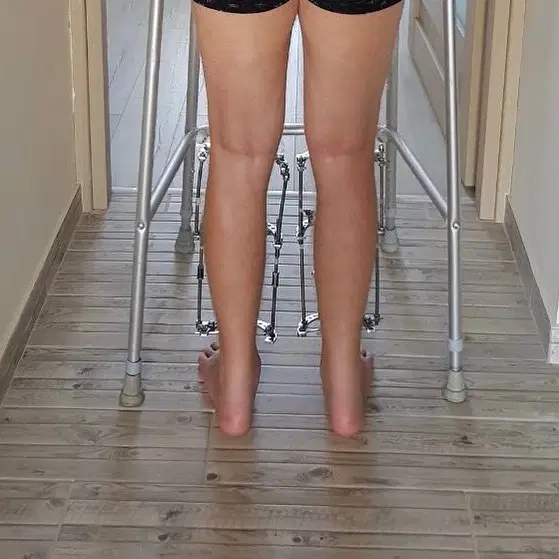Tall women are now turning to a painful new treatment in Turkey, known as leg-shortening surgery, that promises to transform their fortunes, if they are willing to part with thousands of pounds.
According to Daily Mail, specialist surgeons in the country are offering cosmetic height-reduction surgery capable of shortening a person by more than five centimetres.
For some women, the decision stems from frustration in dating and the belief that being tall reduces their chances of finding a partner.
Others have chosen the operation to correct leg length discrepancies.
The surgical method involves cutting through the femur to remove a section of the bone.
Surgeons then reattach the bones with a metal rod, which is removed once healing is complete. Clinics say the procedure leaves no visible scars.
However, patients face extreme pain and long recovery times, often relying on a wheelchair initially, followed by months of demanding physiotherapy.
Despite these challenges, demand is on the rise. Certain clinics in Turkey now advertise complete “surgery packages” that include sightseeing tours, restaurant outings, and boat trips alongside the hospital stay.
Unlike leg-lengthening operations, typically pursued by men, there is little official global data on how many height-reduction surgeries have been performed.
At one Istanbul-based facility, called Height Reduction, surgeons say they have carried out 10 such procedures since 2023.
In July 2024, an American woman reportedly reduced her height by 4.1cm, dropping from 172cm to 167.9cm.
The clinic explained that the femur can be shortened by up to 5.5cm, and the lower leg by as much as 3cm. Patients wishing for further reductions must wait at least six months between surgeries to allow proper recovery.
Following the operation, patients typically spend three to five days in hospital before being discharged with a wheelchair or walker for the first month. Independent walking is generally possible within six weeks, while complete bone healing can take up to four months.
Physiotherapy is considered critical, with four to five sessions per week recommended in the first three months.
Before being approved for surgery, patients are required to undergo psychological counselling.
As the clinic put it, “Patients may experience psychological challenges during their recovery, which is why we provide this support.”
Four weeks after her procedure, the American woman was reportedly able to walk with crutches and had begun intensive physiotherapy, the clinic added.
But as with any invasive procedure, risks remain. Leg-shortening can lead to muscle weakness, delayed bone healing, and extended pain.
Side effects linked to similar leg-lengthening operations include joint dislocation, blood clots, and in rare cases, fat embolism, a potentially fatal condition.
Surgeons warn that complications are about twice as likely as those seen in common procedures like knee replacements.
Weight also plays a crucial role, as the inserted rods have a maximum load capacity, with clinics advising patients not to exceed 70–75kg.
Online forums reveal that some women are pursuing surgery due to dating pressures. Surveys continue to show men often prefer women shorter than themselves, while women generally seek taller partners.
Beyond social factors, science has long shown that height can influence health risks. A 2015 Swedish study found that every additional four inches in height increased cancer risk by 18% in women and 11% in men.
Researchers theorised that this may be due to taller people having more cells that can turn cancerous, or exposure to higher growth hormones in youth.
Another study, published in Annals of Human Biology in 2020, suggested tall women face a heightened risk of endometriosis, potentially linked to elevated oestrogen levels during puberty.







